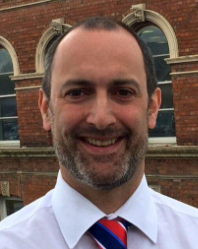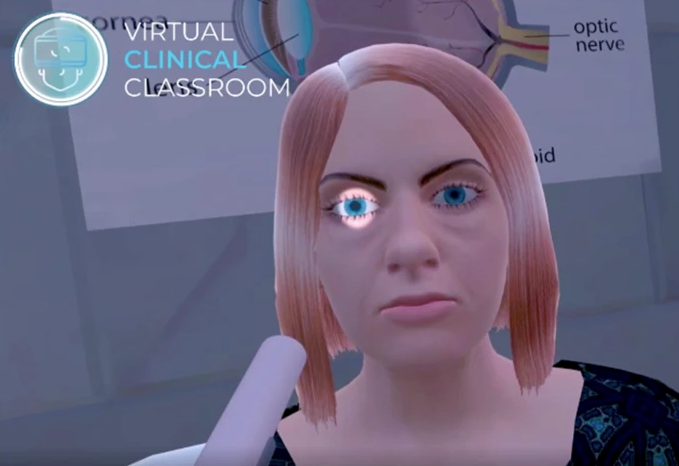Article
Virtual reality gives ophthalmology students chance to view pupil abnormalities
Author(s):
The challenge is for ophthalmology students to have seen a range of pupil abnormalities before they are in a cubicle with a real patient. One solution to this challenge may be virtual reality.

While there is some value to passive learning from textbooks or online content, retention is better with interaction, reflection and also through experiential learning: doing.
Pupillary examination is obviously central to ophthalmic assessment, but also highly relevant for those managing a range of emergency, neurological and general medical presentations.
While medical students can practice pupillary examinations on each other, they will have normal reactions. Another option is simulated patients, which can be pharmacologically dilated, but they are a limited resource, and no other abnormality can be simulated.
Michael Williams, PhD

The challenge is for students to have seen a range of pupil abnormalities before they’re in a cubicle with a real patient. So, they are sent to as many clinical settings as possible, sometimes with a logbook, in the hope that they all get enough opportunities to see, and maybe even to examine abnormal pupils. It works generally, but for seeing a range of pupil abnormalities, its opportunistic. One solution seems obvious: virtual reality.
Michael Williams, PhD, School of Medicine, Dentistry and Biomedical Science at Queen’s University of Belfast in Belfast, North Ireland, has worked with a VR coding company to develop an application for pupillary examination.
In a study published in Eye,1 Williams noted that the app is developed for the Oculus headsets. The user starts in a clinic reception room, where they select one of 12 different options: 10 different pupil abnormalities (like right APD, left fixed dilated pupil with ptosis, right fixed dilated pupil with red eye etc.), random and normal options.
“Then they enter the clinical room, where the patient awaits with whatever pupil abnormality has been selected,” Williams said in the study. “The user’s point of view can be cast to any device on the same WiFi network. The user picks up a pen torch, turns it on and examines the pupils, using the same physical movements as would be used in real life, swinging the torch between eyes, or moving towards the patient for a closer look for example.”
Williams noted that the VR option has been used with more than 250 final year medical students in Queen’s University of Belfast, as part of a session called “The Simulated Eye Clinic.”
According to the study, most of the students had never used VR prior to the session, and there was often a reaction of pleasant surprise as they put the headset in place and began interacting with a virtual patient.
The pen torch is held and moved as in real life. (Image courtesy of Michael Williams, PhD)

“I learned how to instruct students and get them examining the pupils within 30 seconds to 60 seconds,” Williams wrote. “For example, I learned seemingly obvious things like showing them the only two buttons they would need on the controller before they put the headset on, and going in myself first to choose the pupil abnormality, so the student started in front of the patient. Students worked in pairs, so the first student to do it then taught the second.”
Williams then noted that within 10 minutes per pair, more than 250 students were able to examine an afferent pupillary defect, and a fixed dilated pupil in a red eye, i.e. acute glaucoma. Moreover, when surveyed, 96% of 69 respondents said even this short experience improved their knowledge and confidence of examining pupils.
One student noted that it gave them a chance to see an APD, which they had never seen before. Another said it removed the anxiety out of performing in front of classmates.
Williams noted in the study that VR is a tool, and rather than being enticed by its novelty, it must be used as part of an overall educational strategy, to deliver specific learning outcomes. It has potential use for assessment too.
In the study, Williams also noted that practice continues to be the best way to learn the skill, and hinges on repetition, intentionality, faith and fun.
However, VR can provide a cost-effective option for students to engage in clinically relevant, deliberate practice, with an SP who won’t get tired and will have any abnormality desired.
“Never to be a replacement for learning with real patients, it is a tool to accelerate preparation for meeting real patients,” Williams concluded in the study.
Michael Williams, PhD
Williams has a commercial interest in the app. No external funding was involved in the development of the app.
Reference
Williams, M. Virtual reality in ophthalmology education: simulating pupil examination. Eye (2022). https://doi.org/10.1038/s41433-022-02078-3
Newsletter
Don’t miss out—get Ophthalmology Times updates on the latest clinical advancements and expert interviews, straight to your inbox.




